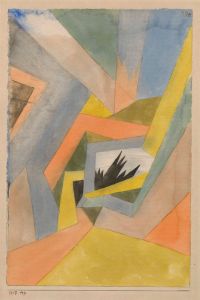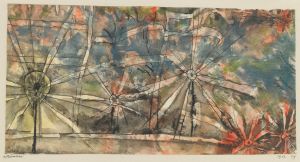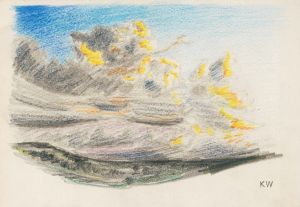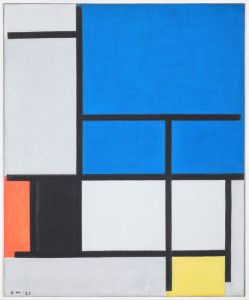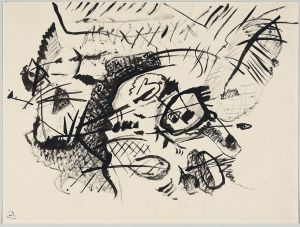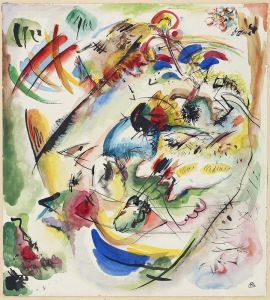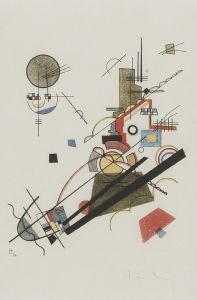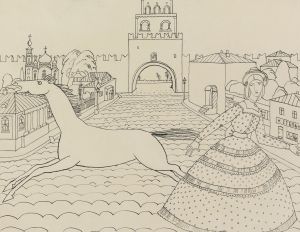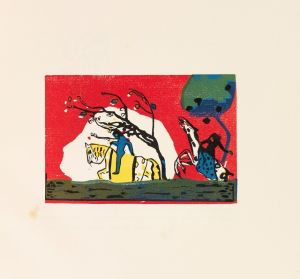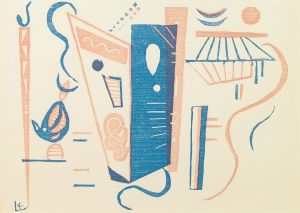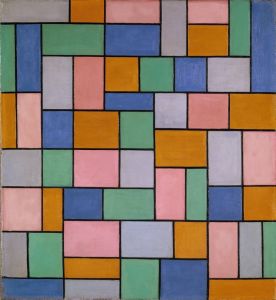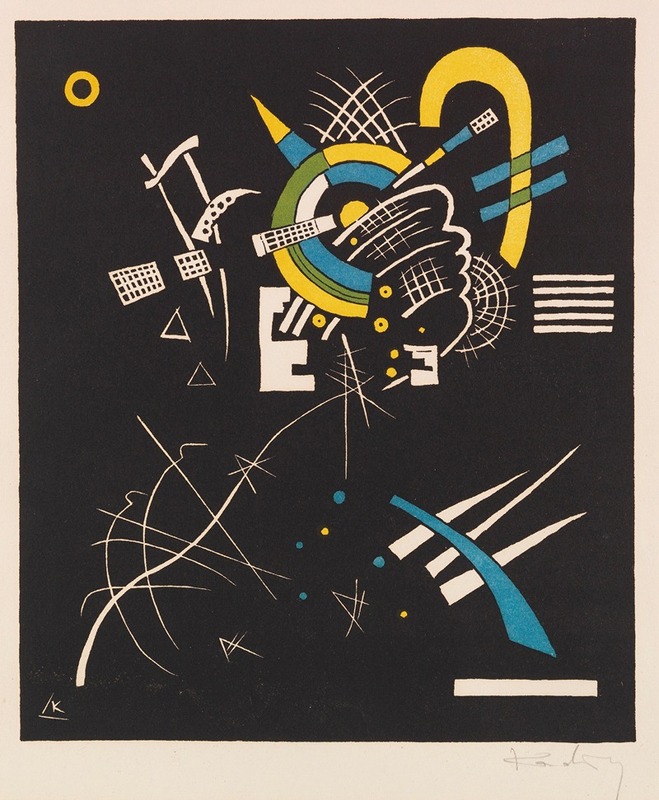
Kleine Welten VII
A hand-painted replica of Wassily Kandinsky’s masterpiece Kleine Welten VII, meticulously crafted by professional artists to capture the true essence of the original. Each piece is created with museum-quality canvas and rare mineral pigments, carefully painted by experienced artists with delicate brushstrokes and rich, layered colors to perfectly recreate the texture of the original artwork. Unlike machine-printed reproductions, this hand-painted version brings the painting to life, infused with the artist’s emotions and skill in every stroke. Whether for personal collection or home decoration, it instantly elevates the artistic atmosphere of any space.
"Kleine Welten VII" (Small Worlds VII) is a notable work by the Russian painter Wassily Kandinsky, created in 1922. Kandinsky is widely recognized as a pioneer of abstract art, and his contributions have had a profound impact on the development of modern art. "Kleine Welten VII" is part of a series of twelve prints, collectively known as the "Kleine Welten" (Small Worlds) series, which showcases Kandinsky's exploration of various printmaking techniques and his abstract visual language.
The "Kleine Welten" series was produced during Kandinsky's tenure at the Bauhaus, an influential art and design school in Germany where he taught from 1922 to 1933. The Bauhaus was known for its innovative approach to art, architecture, and design, and Kandinsky's work during this period reflects the school's emphasis on combining artistic creativity with technical precision.
"Kleine Welten VII" is an abstract composition that exemplifies Kandinsky's mature style, characterized by the use of geometric shapes, vibrant colors, and dynamic compositions. The print employs a combination of lithography, woodcut, and etching techniques, demonstrating Kandinsky's mastery of printmaking and his interest in exploring the possibilities of different media. The interplay of forms and colors in "Kleine Welten VII" creates a sense of movement and harmony, inviting viewers to engage with the artwork on a purely visual and emotional level.
Kandinsky's abstract works are often seen as visual representations of his theories on art and spirituality. He believed that art should transcend the material world and evoke a deeper, more spiritual experience. In his influential book "Concerning the Spiritual in Art" (1911), Kandinsky articulated his ideas about the emotional and symbolic power of color and form. "Kleine Welten VII" can be seen as an embodiment of these principles, as it eschews representational imagery in favor of an abstract, expressive composition.
The "Kleine Welten" series, including "Kleine Welten VII," was well-received by Kandinsky's contemporaries and has since been regarded as a significant contribution to the field of abstract art. The series reflects Kandinsky's ongoing experimentation with form and technique, as well as his commitment to exploring the spiritual dimensions of art. Today, "Kleine Welten VII" and the other prints in the series are held in various public and private collections around the world, where they continue to be studied and admired for their innovative approach and artistic significance.
In summary, "Kleine Welten VII" by Wassily Kandinsky is a key work in the artist's oeuvre, representing his mature abstract style and his engagement with the principles of the Bauhaus. The print is part of a series that highlights Kandinsky's technical skill and his theoretical exploration of the spiritual potential of art. Through its dynamic composition and vibrant use of color and form, "Kleine Welten VII" remains an enduring example of Kandinsky's contribution to the development of abstract art.





